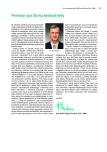Problems of differential diagnosis of paraneoplastic hypoglycaemia
Authors:
Marián Mokáň; Peter Galajda
Authors‘ workplace:
I. interná klinika Jesseniovej LF UK a UN Martin, Slovenská republika, prednosta prof. MUDr. Marián Mokáň, DrSc., FRCP (Edin)
Published in:
Vnitř Lék 2014; 60(9): 730-735
Category:
Overview
Paraneoplastic hypoglycaemia is relatively rare. The most common cause is insulinoma, tumour from pancreatic beta cells with insulin production. Fasting glycaemia together with hyperinsulinaemia during 24 hours of fasting is characteristically present. Endoscopic ultrasonography is the most sensitive method for localization of insulinoma, scintigraphy with labelled GLP-1 analogs and modified positron emission tomography are new perspective methods. Non-beta-cells tumours are mesenchymal or epithelial tumours with huge size, slow growth and increased production of insulin like growth factor IGF-2 (IGF-2oma). Fasting hypoglycaemia in this case is associated with increased levels of total and free IGF-2 as well as big IGF-2 form. Due to suppression effect there are decreased levels of insulin, growth hormone and IGF-1 and ratio IGF-2/IGF-1 is typically increased. In opposite to insulinoma diagnosis of non-beta-cells tumour mostly precedes the occurrence of hypoglycaemia.
Key words:
insulin like growth factor-2 (IGF-2) – insulinoma – non-beta-cells tumours – paraneoplastic hypoglycaemia insulin
Sources
1. Mokáň M. Hypoglykémia. Vydavateľstvo P+M: Turany 2005. ISBN 80–968742–6-8.
2. Galajda P, Mokáň M, Michalovičová M et al. Nádorové ochorenia a poruchy metabolizmu glukózy. Vydavateľstvo Quick Print: Martin: 2014.
3. Samoš M, Kalinová S, Galajda P et al. Hypoglykémia u hospitalizovaných pacientov bez diabetes mellitus. Diabetes a obezita 2012; 12(23): 53–58.
4. Ságová I, Klimentová A, Prídavková D et al. Paraneoplastická hyperglykémia – popis prípadu a prehľad problematiky. Vnitř Lék 2013; 59(5): 402–406.
5. Dynkevich Y, Rother KI, WHitford I et al. Tumors, IGF-2 and hypoglycemia: Insight from clinic, the laboratory and the historical archive. Endocrin Rew 2013; 34(6): 798–826.
6. Livingstone C. IGF2 and cancer. Endocrine-Related Cancer 2013; 20(6): R321-R329.
7. De Groot JWB, Rikhof B, Doorn J et al. Non-islet cell tumour-induced hypoglycaemia: a review of the literature including two new cases. Endocr Relat Cancer 2007; 14(4): 979–993.
8. Hiramatsu K, Takahashi K, Kanemoto N et al. A case of pheochromocytoma with transient hyperinsulinemia and reactive hypoglycemia. Jpn J Med 1987; 26(1): 88–90.
9. Furrer J, Hättenschwiler A, Komminotch P et al. Carcinoid syndrome, acromegaly, and hypoglycemia due to an insulin-secreting neuroendocrine tumor of the liver. J Clin Endocrinol Metab 2001; 86(5): 2227–2230.
10. Morken NH, Majak B, Kahn JA. Insulin producing primary ovarian carcinoid tumor. Acta Obstet Gynecol Scand 2007; 86(4): 500–501.
11. Hinchliffe E, Allcock RL, Mansoor W et al. A patient with a metastatic gastroenteropancreatic endocrine carcinoma causing hyperinsulinaemic hypoglycaemia and the carcinoid syndrome. Ann Clin Biochem 2011; 48(Pt 6): 579–583.
12. Daughaday WH. Hypoglycemia due to paraneoplastic secretion of insulin-like growth factor-I. J Clin Endocrinol Metab 2007; 92(5): 1616.
13. Eastman RC, Carson RE, Orloff D et al. Glucose utilization in a patient with hepatoma and hypoglycaemia. J Clin Invest 1992; 89(6): 1958–1963.
14. Habra MA, Núñez R, Chuang H et al. Fatal hypoglycemia in malignant pheochromocytoma: direct glucose consumption as suggested by (18)F-2-fluoro-2-deoxy-D-glucose positron emission tomography/computed tomography imaging. Endocrine 2010; 37(1): 209–212.
15. Flier JS, Usher P, Moller DE et al. Induction of the glucose transport system by tumor necrosis factor/cachectin: Implications for the hypoglycemia of sepsis and tumors. Clin Res 1987; 35: A512.
16. Mahony SM, Tisdale MJ. Metabolic effects of tumour necrosis factor alpha in NMRI mice. Br J Cancer 1990; 61(4): 514–519.
17. Braund WJ, Naylor BA, Williamson DH et al. Autoimmunity to insulin receptor and hypoglycaemia in patients with Hodgkin´s disease. Lancet 1987; 1(8527): 237–240.
18. Arnqvist HJ, Halban PA, Mathiesen UL et al. Hypoglycaemia caused by atypical insulin antibodies in a patient with benign monoclonal gammapathy. J Intern Med 1993; 234(4): 421–427.
19. Fukuda I, Hizuka N, Ishikawa Y et al. Clinical features of insulin-like growth factor-II producing non-islet-cell tumor hypoglycemia. Growth Horm IGF Res 2006; 16(4): 211–216.
20. Škrha J. Hypoglykemický syndrom. Grada: Praha 2001. ISBN 80–7169–992–6.
21. Škrha J. Hypoglykemie. Od patofyziologie ke klinické praxi. Maxdorf: Praha 2013. ISBN 978–80–7345–319–0.
22. Pongprasobchai S, Lertwattanarak R, Pausawasdi N et al. Diagnosis and localization of insulinoma in Thai patients: performance of endoscopic ultrasonography compared to computed tomography and magnetic resonance imaging. J Med Assoc Thai 2013; 96(Suppl 2): S187-S193.
23. Sowa-Staszczak A, Pach D, Mikoloajczak R et al. Glucagon-like peptide-1 receptor imaging with [Lys40(Ahx-HYNIC- 99mTc/EDDA)NH2]-exendin-4 for the detection of insulinoma. Eur J Nucl Med Mol Imaging 2013; 40(4): 524–531.
24. Kauhanen S, Seppänen M, Minn H et al. Fluorine-18-L-dihydroxyphenylalanine (18F-DOPA) positron emission tomography as a tool to localize an insulinoma or beta-cell hyperplasia in adult patients. J Clin Endocrinol Metab 2007; 92(4): 1237–1244.
25. Kauhanen S, Seppänen M, Minn H et al. Clinical PET imaging of insulinoma and beta-cell hyperplasia. Curr Pharm Des 2010; 16(14): 1550–1560.
26. Tessonier L, Sebag F, Ghander C et al. Limited value of 18F-F-DOPA PET to localize pancreatic insulin-secreting tumors in adults with hyperinsulinemic hypoglycemia. J Clin Endocrinol Metab 2010; 95(1): 303–307.
27. Treglia G, Inzani F, Campanini N et al. A case of insulinoma detected by (68)Ga-DOTANOC PET/CT and missed by (18)F-dihydroxyphenylalanine PET/CT. Clin Nucl Med 2013; 38(6): e267-e270.
28. Perros P, Simpson J, Innes JA et al. Non-islet cell tumour-associated hypoglycaemia: 111inoctreotide imaging and efficacy of octreotide, growth hormone and glucocorticosteroids. Clin Endocrinol (Oxf) 1996; 44(6): 727–731.
Labels
Diabetology Endocrinology Internal medicineArticle was published in
Internal Medicine

2014 Issue 9
Most read in this issue
- Life expectancy of people with type 1 diabetes in the past and today
- Gliptins: a safe and effective treatment of diabetes mellitus
- Insulin resistance – its causes and therapy possibilities
- AGEs and RAGE – advanced glycation end-products and their receptor in questions and answers
